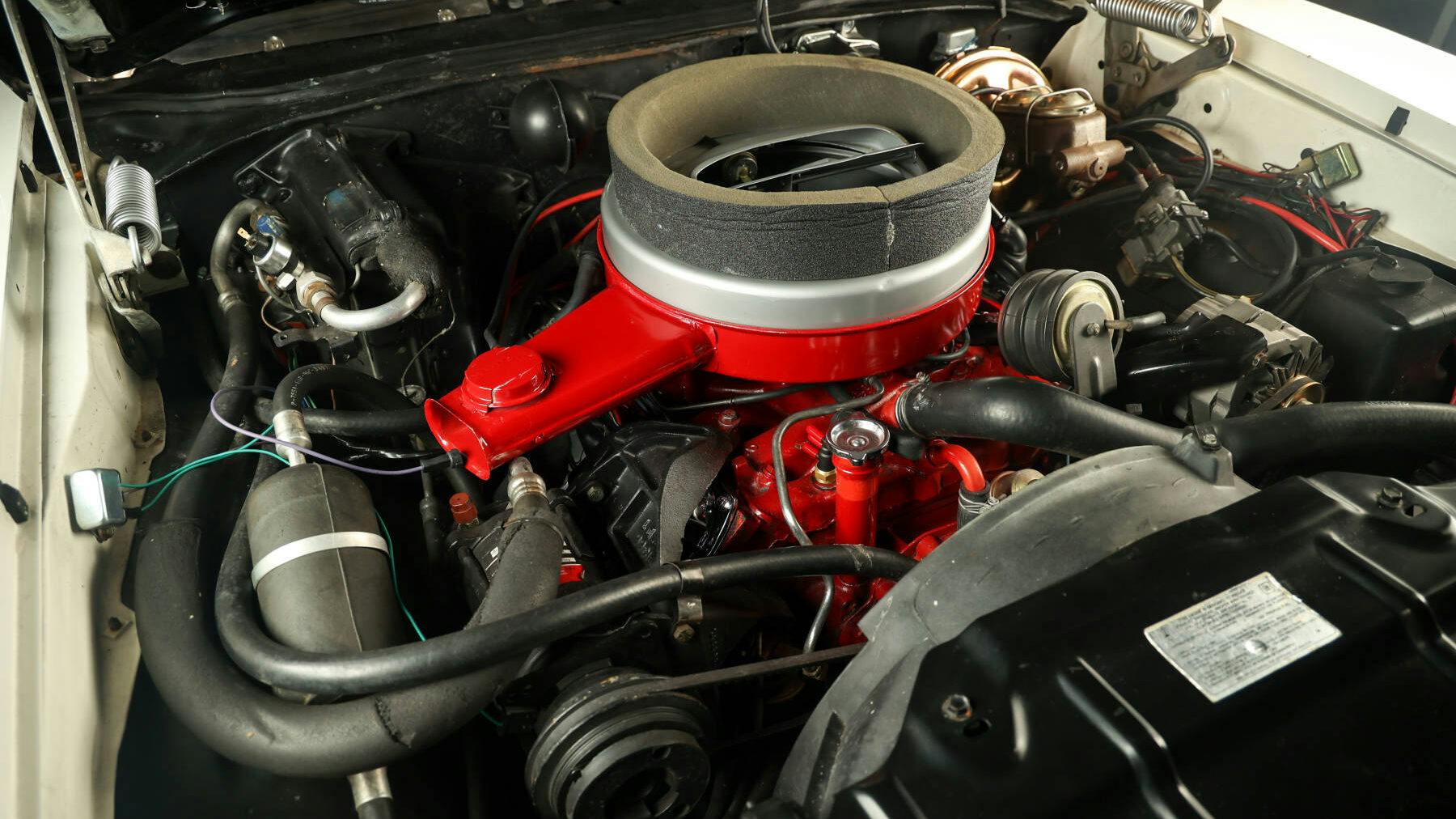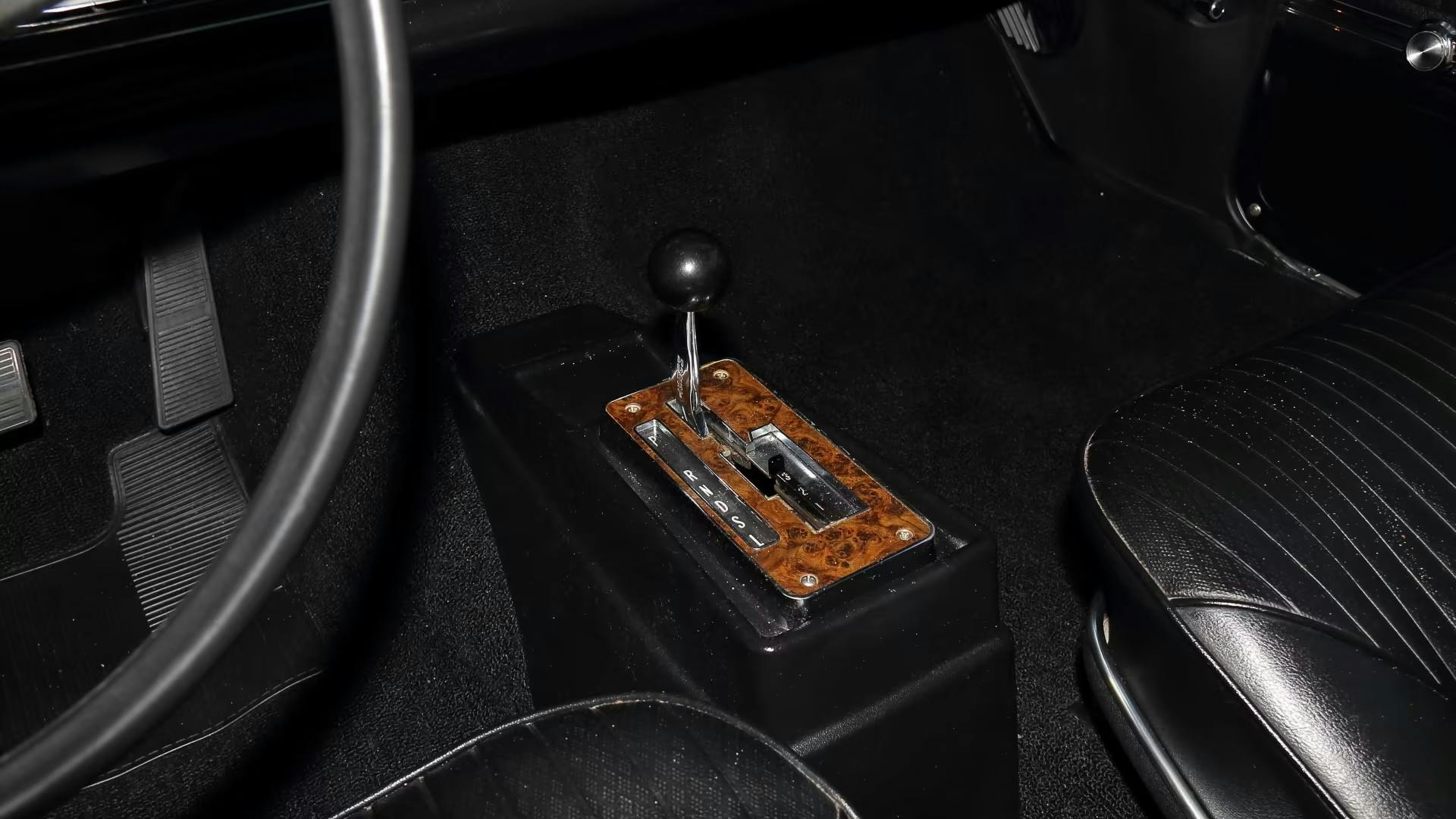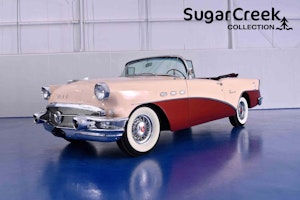Media | Articles
3 Oldsmobiles from the brand’s youthful, exuberant heyday
You probably remember the “Not your father’s Oldsmobile” ads that debuted in 1988 in an attempt to promote the company’s updated front-wheel drive lineup and turn around a precipitous drop in sales. Even as a school-age kid, those 30-second spots fell flat for me. I understood that the sleek new W-body Cutlass was more advanced than my grandma’s late ’70s rusty brown car of the same name, but not my father’s Oldsmobile? Yes, these new cars were the antithesis of muscle, but the ground-pounding 4-4-2s and the occasional Hurst/Olds my dad would go out of his way to steer me toward at car shows were glorious. Why would a company would want to distance themselves from that? If anything, those cars were peak Oldsmobile.
Decades later, we know how well those ads worked. Olds is gone, and for many younger buyers, the name might as well be Studebaker or even Mercer—they just don’t see many classic Oldsmobiles, so it would be easy to consider the brand a dusty relic without fun or interesting models to enjoy.
This is, of course, quite wrong. Oldsmobile’s effort in the muscle car era yielded several eye-catching and entertaining alternatives to the Chevy/Ford/Dodge contingent, and they stand out even today.
1969 Hurst/Olds

Sixties muscle car lore has no shortage of end-around stories—processes that enabled some truly fast and fun cars to come to life despite corporate edicts and other efforts to stymie the horsepower wars. Chevy’s COPO cars are perhaps the most notorious, but the Hurst/Olds deserves a special mention.
George Hurst had an idea. An inveterate hot rodder and creator of the shifter that bore his name, Hurst had established a strong relationship with GM in the early ’60s. In 1967, he approached Pontiac with a plan to get around the corporate ban on engine sizes of greater than 400 cubic inches in mid-size and smaller platforms: Hurst would install the Poncho 428-cubic inch V-8 into completed Firebirds and Pontiac would sell them at their dealerships. While conversations did make it up the ladder with some enthusiasm, the Pontiac deal fell short. Instead, Hurst was pointed to another GM brand that might have interest: Oldsmobile.
This time, the effort gained traction. Oldsmobile dearly wanted to update its image and drive sales of their 4-4-2, which was capable on the street but paled in comparison to Pontiac’s GTO on the sales charts. A Hurst/Olds halo car, with its engine bay filled with the new Oldsmobile 455-cubic inch V-8 while all the other mid-sized cars had to make do with GM’s 400-cube limit, appealed to Oldsmobile chief engineer John Beltz. Ultimately, even with the edict in place, the bigger engines were installed by Oldsmobile itself before the cars were delivered to Hurst for further modification.

The Hurst/Olds debuted in 1968, but the 1969 model is more broadly remembered thanks to its more overt Firefrost Gold over Cameo white paint scheme and mailbox hood scoops wearing “H/O 455” in large gold lettering.
At 380 horsepower and an even 500 lb-ft of torque, the 455 in the ’69 Hurst/Olds didn’t disappoint, though it had 10 hp less than the non-AC models from 1968. Zero-to-60 took a brisk 6 seconds and the quarter mile went by in 14—not the top of the muscle car heap, but still plenty quick. The only option for shifting was the TH-400 three-speed automatic topped with, you guessed it, a Hurst shifter that had the standard pattern along with another gate that enabled shifting through the forward gears without the possibility of engaging park or reverse.
In addition to the engine, hood scoop, shifter, and hallmark color scheme, a large rear wing, special door mirrors, grey 15×7-inch wheels, Hurst/Olds emblems, and a registration dash plaque (provided when the original buyers sent in their information) completed the package. According to the Hurst/Olds Club of America, 906 ’69 Hurst/Olds were made, all of which were coupes except for three convertibles used by Hurst for promotional activity (other sources put that number at two).
Unlike many muscle cars, the Hurst/Olds did not see a value bump during the pandemic. It did, however, begin to see its values drop as the market began to cool in 2022. A #2 excellent condition car is valued at $63,500, while a #3 car comes in at $46,600, which sounds affordable compared with other rare muscle with similarly interesting history. Hagerty Price Guide editor Greg Ingold elaborates:
“The main downside is that they’re all equipped with automatics, which might be a detractor to non-Oldsmobile enthusiasts. Couple that with the fact that when Hurst/Olds come up for sale, they’re not often in show condition—a lot are driver-quality cars. That may drag the average down somewhat.”
1970 4-4-2 W-30

What a difference a year makes. The brass at GM finally decided to lift its engine displacement limitations for the 1970 model year, and suddenly Olds didn’t need the Hurst side door operation to fit the 455 into its A-body muscle car—it was now standard in the 4-4-2. As a result, the Hurst/Olds was shelved and the 4-4-2 with the W-30 package became the top dog with a healthy 370 horses and 500 lb-ft of torque, just shy of the the Hurst/Olds’ 380. Hurst wasn’t completely missing from the picture—buyers who opted for the TH 400 automatic got the dual-gate shifter (a heavy duty four-speed manual was also available).
The W-30 package consisted of quite a few engine tweaks given the five-horse advantage it held over the base 455—different heads, an aluminum intake manifold, and a unique camshaft were the primary changes. Though these engines didn’t wind out the tach, torque is the Olds 455’s calling card, and it had plenty of it.

Other elements of the package include a dual-scoop fiberglass hood that leads air to a vacuum-actuated opening to the air cleaner, front disc brakes, and its handsome appearance elements. Though a cheaper car than the Hurst/Olds when new, the W-30 only fared nominally better than the Hurst/Olds in the sales department. 3100 ’70 W-30s were sold across three body styles, with only 264 convertibles produced.

Today, despite the greater number of cars, lower horsepower rating, and less tantalizing backstory, the ’70 W-30 holds a commanding value advantage over the Hurst/Olds—#2 W-30s are almost 40 grand more expensive at $103,000, and good-condition driver values are just under $75,000. The W-30 enjoyed a dramatic bump during the pandemic, with #2 values cresting $130,000 in July of 2022 before settling just above pre-pandemic values in the last Price Guide.
1970 Cutlass Rallye 350

An outgrowth of the Hurst program though it was built in-house, the Cutlass Rallye 350 offered all the show (and then some) along with a portion of the go of its more muscular siblings. Debuting in 1970 and lasting only that model year, it’s not an overstatement to say that the Rallye 350 is one of most visually distinctive Oldsmobiles ever produced.
Even for the rainbow-hued colorful peak of the muscle car era, the Cutlass Rallye 350 wore a lot of yellow. The bumpers, typically chrome-plated, were instead urethane-coated and slathered in the same Sebring Yellow as the body, and the wheels eschewed the usual chrome trim rings for full effect. Shiny bits trimmed the glass and grille, and strokes of black decals along its flanks and hood scoops added definition to the car’s lines—those are the only concessions to the car’s otherwise completely sunny disposition.

As attention-getting as its exterior was, the Rallye 350 wasn’t going to win many races, but it wasn’t a boat anchor, either. At 310 hp and 390 lb-ft of torque, the 350-cubic inch L74 engine was powerful enough to ensure that buyers wouldn’t be embarrassed on the street while also avoiding big-block-level insurance premiums. Transmission options included three- and four-speed manuals as well as the Turbo Hydra-Matic 350 three-speed automatic, and the differential had optional “Anti-Spin,” Olds’ term for limited slip, and 3.23-, 3.42-, or 3.91:1 gear sets. Optimally set up, the Rallye 350 would find 60 in seven seconds and run the quarter in the low 15-second range.
Whether buyers weren’t sure what to do with such a flashy car from a typically staid company, or there was a lack of understanding of how to promote this mid-range muscle car, the Rallye 350 didn’t fare well on the sales floor—only 3547 units were produced. Modern buyers can expect to pay about 50 grand for an excellent example, while a good driver can be had for under $35,000. The Rallye 350 saw a significant bump in value in 2021 and has remained stable since then.
It turns out that I may not have been the only one who had a family member who shared with them how cool these cars could be. Millennials are showing interest in their father’s (or is it their grandfather’s?) Oldsmobiles, with a significant 22 percent share among Cutlass buyer (the Rallye 350 is categorized with the Cutlass). That their portion of 4-4-2 ownership is slightly less makes sense given that car’s higher values. Gen X represents about a third of Cutlass and 4-4-2 buyers, while boomers continue to hold strong in both. Though values are flat for the Rallye 350 and trending down for the Hurst/Olds and ’70 W-30, interest among younger buyers appears to be significant enough to suggest that Olds muscle will continue to remain a popular, if slightly niche, alternative option in the segment.
Oldsmobile struggled with its image, on and off, for decades. From performance V-8 trailblazer in the ’50s, to a reputation as an old person’s car in the ’60s before these A-body muscle cars arrived, to a sales leader, to an old person’s car yet again before its death as a brand in 2004, the company nonetheless did have some great and characterful efforts. The Hurst/Olds, W-30, and Rallye 350 represented a shining moment for the brand. Which of these three would you pick?
***
Marketplace
Buy and sell classics with confidence
Check out the Hagerty Media homepage so you don’t miss a single story, or better yet, bookmark it. To get our best stories delivered right to your inbox, subscribe to our newsletters.


















OLDS came out with the ground breaking 303 in 1949, considered by many to be the first mass production muscle car. Won a lot of races. Personally am working on my 50 88 Holiday Coupe, putting a 1962 Olds Starfire 394 engine back in it. If you were doing well back in the sixties and wanted a big sporty car with a lot of muscle you might have bought an Olds Starfire, or a Pontiac Bonneville, or Chrysler 300, not a cheap Chevy. No offense Chevy please.
I haven’t seen anyone mention the W31 Olds, they were pretty rare but there were a few around and they were nasty. They were the 350 engine with lots of cam and big valve heads. Only available with a four speed.
I have a 1968 Hearst Olds. I purchased it new in West Virginia in 1968. It was the only one sold in West Virginia. I think the car is much prettier than the 69 that white and gold just does not do it for me I Street race this car in the 60s all through West Virginia and Kentucky and it was a dominant force on the street. It was hard at first to get a hold of it with all that torque but with airbags I finally got it to go straight as arrow. With a set of slicks, it would almost pull the wheels off the ground. People have said that it actually had the tires in the air but I couldn’t actually say for sure. All I know is it is a handful to drive but fun fun fun.j
I’m yet another older (67) guy who was very fortunate to have a Cutlass. My Dad never even had the money for a new car but my brother in law found a used 69 Cutlass Supreme in light yellow with 90000 miles. As a shy nerd type, this car was so cool to have in high school. Sadly I was hit by an unlicensed driver totaling the car. I still look at auctions hoping to find a non 442 in good shape for not ridiculous money. While I graduated to owning three Corvettes currently, I still long for the car of my youth. I lived the Chevelles of the era but the Cutlass was the one I actually owned and wouldn’t have another ‘cool’ car until I bought an Eclipse in 1991.
Growing up in a rural town with a large family we didn’t have cars like these, we had 4 door family sedans, In high school Chevelle’s Camaro’s etc. we’re cheap and plentiful in high school but there weren’t a lot of Oldsmobiles in the area, we had a Chevrolet and Ford dealership. So my first car was a 65 Impala SS, I did have a 70 442 that I pulled out of a farmers back yard but I never had it running before I traded it off, I still have the sport steering wheel from that car. My brother inlaw had a 72 Cutlass Supreme and then he bought a 71 Cutlass Supreme convertible and I fell in love with it and was able to buy it from him years ago and hopefully keep it for years to come along with my 70 Toronado GT.
as a genXer growing up with 50s nostalgia going on too, i still would love to find a 58 super 88… one of the best over the top chrome deals of the decade
My favorite isn’t in the article and isn’t well-known. It’s the 1966 4-4-2 that strayed from the name-related formula because it had a triple two-barrel intake.
I had just started in a clerical position in the St. Louis Mo Oldsmobile Zone office in 1969 and was one of the few who really had gasoline in my blood. When I saw the Rallye 350 in 1970 in solid yellow paint (including the bumpers – very rare for any car back then) I thought ‘oh boy’ Oldsmobile is really onto something. Boy was I wrong. The older Oldsmobile customer base was just not into that and back then we had a hell of a time getting dealers to take them for their inventory. About a year later the 1971 was in the advanced ordering guide book which made me feel good until about a month later when Oldsmobile Division said there would not be a 1971 edition which made many dealers happy. About the same time I saw a train load of the Plymouth and Dodge Super Bees go bye and thought Chrysler was really risking at lot with those cars with the high rear wings. The Fenton Mo Chrysler plant was in a St. Louis suburb. Wrong again. Those really were THE DAYS and then the music died (Buddy Holly).
Had a 69 – 442, Gun Metal Gray with Black Vinyl top and black interior! Fastest car I ever owned until I purchased a LT Vette years later. It was a classy car and the envy of many of my friends.
Love my 1969 442 convertibld.
Well, here go’s….had a 64 2 door w/ 330, then a 72 Cutless 2 door, then 73 2 door, last was a 89 cutless 2 door 5 sp. Loved everyone of them… my parents own a 56 4 door… wish they still made the OLDS.
GREAT CARS…..
Not much mention of the original 442—1964. I purchased two 442’s from Lloyd A.Wise , Oakland, California. Ordered a 65′ and bought an 85′ off the show room floor in 1985. My 65′ ( Holiday Coupe, 400 cu.in.,345 HP beat 4 barrel GTO’s but not the 3×2’s option. (360 HP )
Father an Oldsmobile dealer 60’s and 70’s. Saw some memorable Olds rumble off the Anchor Motor Freight carrier …………… hard to forget a new body 68 “Ram-Rod” base Cutlass 4 speed. Some good things from “The Doctor” in those days
https://i.pinimg.com/originals/e3/49/14/e34914ac665db9a0257a28e035dc07f9.jpg